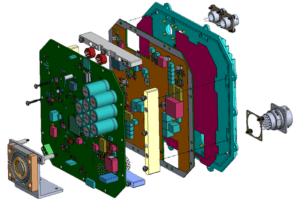Microvia
A microvia is a very small through-hole in a printed circuit board (PCB) used to make electrical connections between different layers of the board. These are key components in high-density interconnect (HDI) technology, which allows for more compact and efficient PCB designs, particularly important in modern electronics where space is at a premium.
Here are some defining characteristics of microvias:
-
Size: Microvias are significantly smaller than traditional vias. They typically have a diameter ranging from about 50 to 150 micrometers (µm), although advancements in PCB manufacturing are enabling even smaller microvias.
-
Formation: Microvias are usually created using laser drilling, which allows for the precise creation of these small holes. This method is preferred over mechanical drilling, which is used for larger vias, due to its accuracy and ability to create smaller holes.
-
Depth: Microvias are often categorized by their depth. They are generally one of three types: blind vias, buried vias, or through vias. Blind vias connect an outer layer to an inner layer but do not go all the way through the PCB. Buried vias are entirely enclosed within the PCB and connect internal layers. Through vias, less common in microvia technology, pass through the entire board.
-
Application: Microvias are used in HDI PCBs, which are found in high-performance and miniaturized electronic devices. They are essential in applications where space savings, reduced weight, and enhanced electrical performance are critical.
-
Advantages: The use of microvias allows for a higher density of connections on a PCB, enabling more complex circuitry in a smaller area. This leads to smaller, lighter, and potentially faster electronic devices. Microvias also help improve signal integrity and reduce signal loss and cross-talk in high-speed circuits.
-
Manufacturing Considerations: The fabrication of microvias requires precise and advanced manufacturing techniques, which can increase the cost of PCB production. The choice of materials and plating techniques is also crucial to ensure the reliability of the microvias.
In summary, microvias are a cornerstone of modern PCB design, enabling the development of compact, high-performance electronic devices by allowing more efficient and denser routing of electrical connections within the board.



